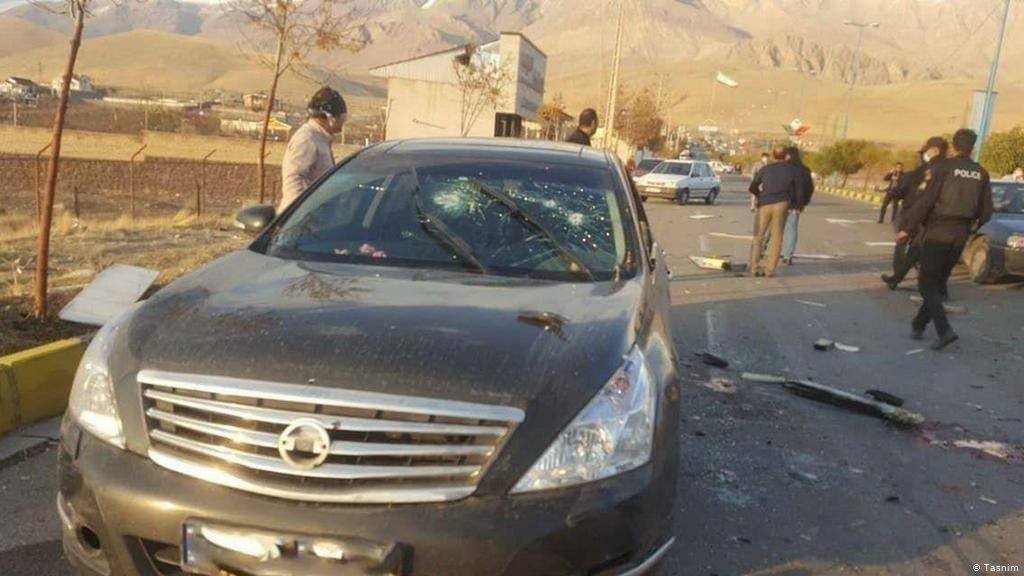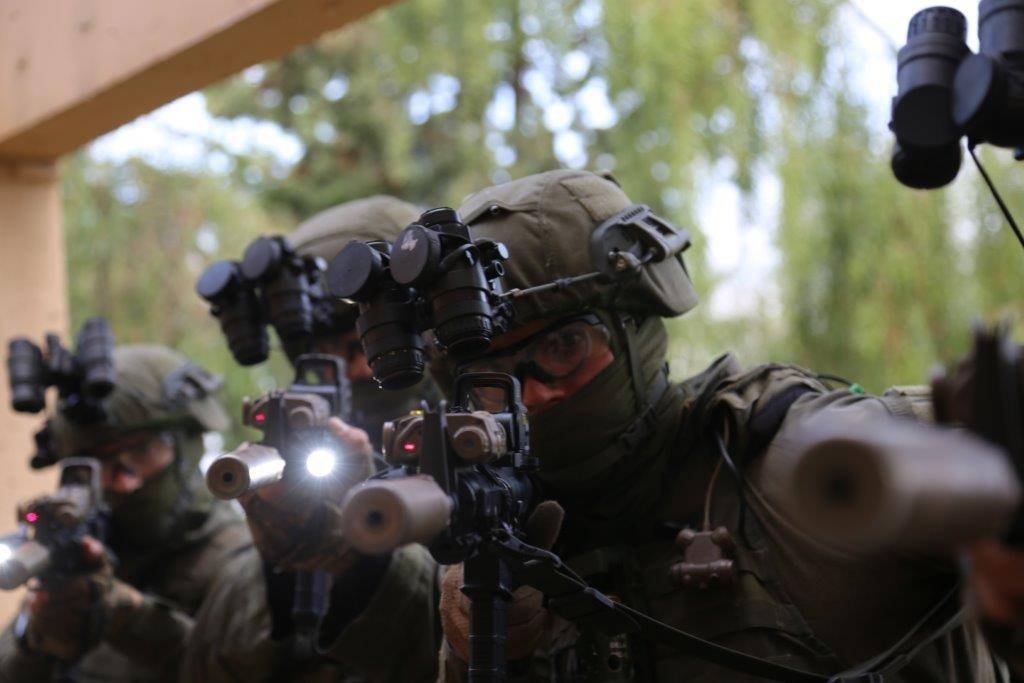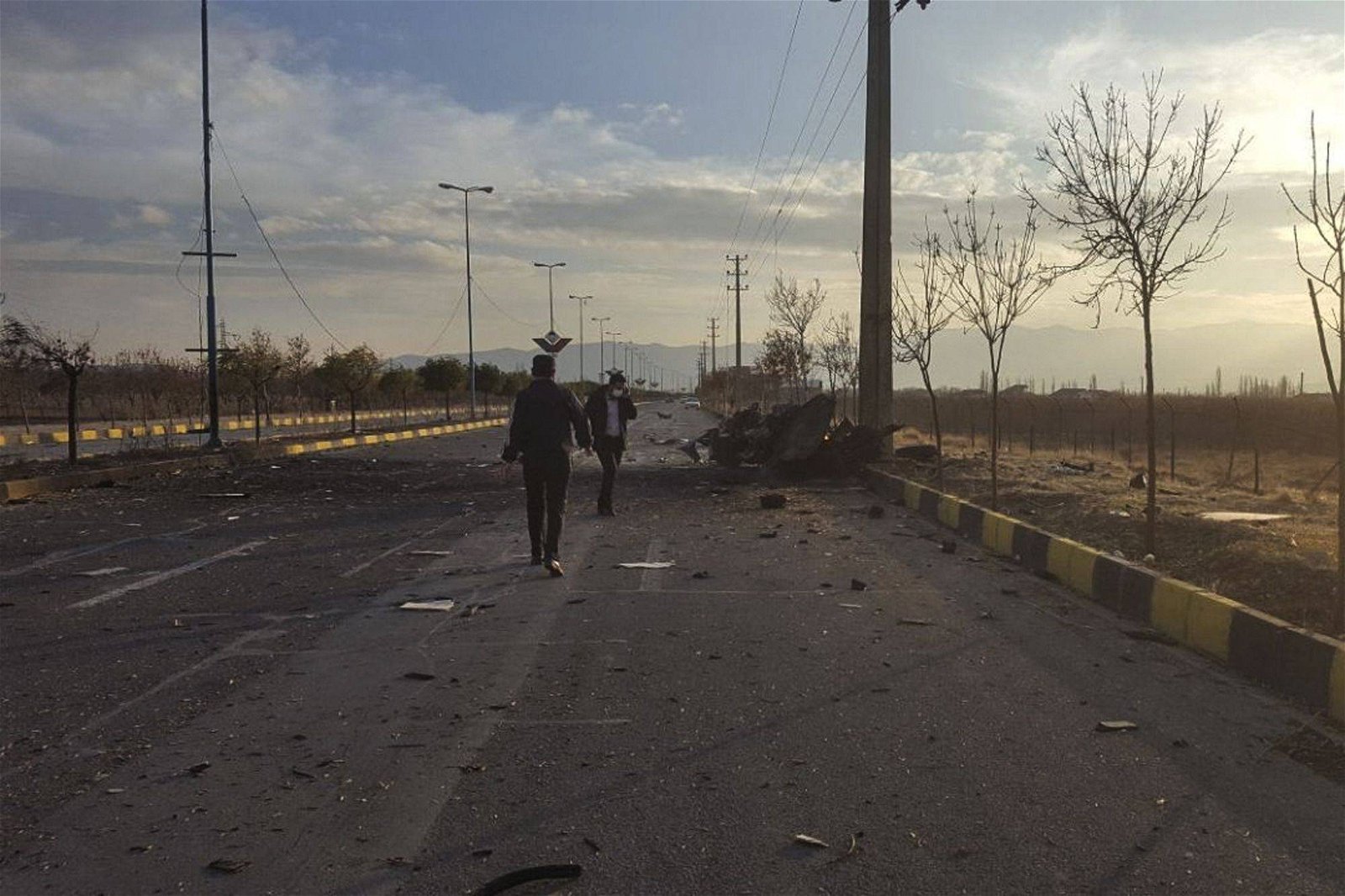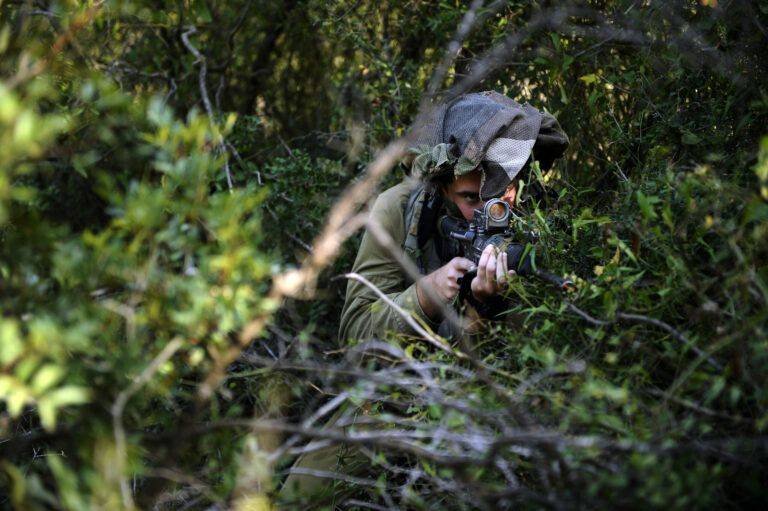Sunday on Twitter, Iranian journalist Mohamad Ahwaze said leaked information showed a team of assassins — using bombs, snipers, and gunmen on motorcycles — were responsible for the death of Iran’s chief nuclear scientist, Mohsen Fakhrizadeh.
So far, no one has taken credit for the attack; however, hours after the news of Fakhrizadeh’s death broke, citing “one American official — along with two other intelligence officials,” The New York Times was already confirming Israel was behind the attack. That’s hardly a stretch, given the two nations’ contemptuous relationship and Israel’s steadfast commitment that Iran will never become a military nuclear power.
Ultimately, if indeed Israel is behind Fakhrizaheh’s death, it’s almost certain this was the work of a very shadowy and highly secretive Mossad sect: the Kidon.
KEY POINTS
- Israel has a long history of relentlessly pursuing and targeting enemies for assassination.
- Founded in 1970, Kidon is the ultra-secretive unit in the Mossad’s Caesarea (undercover) Division, said to specialize in carrying out targeted killings in foreign lands.
- In Hebrew, Kidon means “bayonet” or “tip of the spear.”
- Very little is known about the unit and it’s said to be “one of the most closely guarded secrets in the Israeli intelligence community.”
- Observations of past killings attributed to Kidon show the unit favors use of gunmen, motorcycles, and “sticky bombs.”
- Tactics used in the assassination of Mohsen Fakhrizadeh are consistent with past targeted killings attributed to Kidon.


BACKGROUND: What is Kidon?
The exact origins and background of Kidon are not well known. However, most accounts say legendary Mossad operative Mike Harari formed the unit in 1972 after the murder of 11 Israeli athletes by terrorist operatives of the Palestine Liberation Organization (PLO) during the Munich Olympics. Israel’s response to the Olympic athletes’ murders, “Operation Wrath of God,” is believed to be where Kidon initially honed its skills in covert assassinations.
During “Operation Wrath of God,” which lasted from at least October 1972 to 1988, Kidon participated or was principally responsible for at least 22 deaths during covert attacks on the PLO. Kidon is suspected of carrying out several other assassinations during “Operation Wrath of God,” and the exact number of targeted killings remains unknown.
According to former Mossad operations officer Mishka Ben-David, today’s Kidon operatives are hand-selected from within Mossad or one of the IDF’s special operations units. Some reports say that after spending up to 2 years training in the Negev desert, Kidon operatives are inserted deep into denied, occupied, and hostile territories outside of Israel.
Ben-David says secrecy around Kidon is so tight that members of the unit are entirely compartmentalized away from Mossad, and Kidon agents use assumed names even when interacting with Mossad operatives from other teams.
There have been several stories written about Kidon over the years, however because of their ultra-secretive nature, it’s ultimately nearly impossible to differentiate between fact and speculation.
While verifiable facts are hard to come by, analysis of past assassinations attributed to Kidon does offer some glimmers of insight into how the unit operates.


ANALYSIS: A Deep Dive into How Kidon Operates
When the United States carries out targeted killings, they overwhelmingly prefer to do so far removed from the action and through the use of airborne drone strikes. For Russia, their security services have long demonstrated a bias toward discreetly using highly toxic poisons. In contrast, Israel’s Kidon is known for dramatic assassinations that sound like scenes from an action movie.
In 2010, after four rounds of U.N. economic sanctions failed to halt Iran’s enrichment of weapons-grade uranium, U.S. intelligence sources say Israel gave Kidon the greenlight to begin targeting Iranian nuclear scientists.
In addition to Fakhrizadeh, Israel is the prime suspect for five successful assassinations of Iranian nuclear scientists from 2010 to 2012 and one attempted assassination. A 2007 gas poisoning of the co-founder of the Nuclear Technology Center of Isfahan, Ardeshir Hosseninpour, is additionally suspected also to be the work of Kidon.
The notably similar tactics used in previous attacks on Iranian scientists have in effect become the unspoken calling card of Kidon.
- Elementary-particle physicist Masoud Alimohammadi was killed on January 12, 2010, after a bomb rigged to a motorbike exploded as he left his home to head for work.
- Iranian authorities arrested twenty-four-year-old amateur kickboxer Majid Jamali Fashi Alimohammadi for murder. In a videotaped confession, Fashi said he’d received training and a payment of $120,000 from Mossad to carry out the hit. Fashi was tried, convicted, and executed in 2012.
- On November 29, 2010, unknown assassins on motorcycles killed nuclear scientist and engineer Majid Shahriari by planting and detonating a C-4 bomb on his car door while Shahriari was driving.
- At nearly the same time the hit was being carried out on Shahriari, another would-be assassin rammed a bomb-laden motorbike into the car of a prominent leader of Iran’s nuclear research program, Fereydoon Abbasi. Abbasi and his wife narrowly escaped by jumping out of their vehicle just before the bomb detonated.
- On July 23, 2011, Darioush Rezaeinejad, an electrical engineering student and employee at one of Tehran’s national security nuclear research facilities, was shot and killed by two motorcycle-riding gunmen in front of his home after he and his wife had just picked up their daughter from kindergarten. The unknown assailants also wounded Rezaeinejad’s wife during the attack
- On January 11, 2012, in a nearly identical attack as the one carried out on Majid Shahriari months earlier, nuclear scientist Mostafa Ahmadi Roshan was killed when a passing motorcyclist placed a magnetized “sticky bomb” on his car while he was on his way to work.
- Months before the assassination of Fakhrizadeh, on August 7, 2020, unknown assassins killed Al Qaeda’s second-highest leader Abdullah Ahmed Abdullah and his daughter Miriam, the widow of Osama bin Laden’s son Hamza bin Laden, on the streets of Tehran. Citing four U.S. officials in November, the New York Times claimed Kidon assassins on motorcycles were responsible for gunning down Abdullah and his daughter at the behest of the United States.
In most past incidents, gunmen, motorcycles, and/or car bombs have been the favored methods in assassinations attributed to Kidon. There are also notable cases in which other Israeli agents have demonstrated their prowess for asymmetrical and unconventional methods for killing.
- On March 28, 1978, the terrorist leader of the Popular Front for Liberation of Palestine, Wadie Haddad, was killed after Mossad agents switched out his toothpaste with an identical tube containing a deadly toxin.
- On March 6, 1996, chief Hamas bombmaker Yahya Ayyash was killed after clandestine agents gave him a cellphone containing an explosive device packed with 15 grams of RDX.
-
- Later reports confirmed the assassination of Ayyash was not the work of Kidon or Mossad, but rather Israel’s internal security service Shin Bet.
Since 1972, there have been nearly 100 assassinations believed to have been carried out by Israel, including Kidon. While some of those suspected cases have been confirmed by other Intelligence services or unofficially by Israeli officials, as a matter of policy, Israel does not officially confirm or deny their involvement in covert assassinations.


OUTLOOK: The Future of ‘The Hit’
Iranian journalist Mohamad Ahwaze said he’d received information showing the November 27, 2020 assassination of Iran’s chief nuclear scientist Mohsen Fakhrizadeh was a meticulously planned and expertly executed operation.
Citing information leaked to him by Iranian government and Iranian Revolutionary Guard officials, Ahwaze said the team of assassins knew the exact date, time, and route a three-car convoy would be traveling as they made their way to Fakhrizadeh’s private villa in Absard, a city near Tehran.
According to Ahwaz, operatives cut off power to the Absard area 30 minutes before the attack, and a team of 12 assassins — including gunmen in a Hyundai Santa Fe SUV, on motorcycles, and a group of snipers — lay in wait to ambush the protection detail near a roundabout entering the city. As the motorcade reached the area, leakers told Ahwaze that a booby-trapped Nissan pickup truck exploded, and the gunmen unleashed a hail of bullets on Fakhrizadeh’s car.
Ahwaz said, “According to Iranian leaks, the leader of the assassination team took Fakhrizadeh out of his car and shot him and made sure he was killed.”
Reports say assailants injured several members of Fakhrizadeh’s security team during an ensuing gun battle. None of the assassins are believed to have been injured, and thus far, all have eluded capture by Iranian authorities.
Mohamad Ahwaze, the London-based Iranian journalist who shared these new details Sunday on Twitter, is known for having some deep sources inside the secretive Iranian regime. In March, Ahwaze exposed the extent of the Covid-19 pandemic in Iran and published disturbing videos showing body bags strewn about the floors in an Iranian hospital.
So far, Iran has not officially confirmed Ahwaze’s leaked information and semi-official Iranian news reports on Fakhrizadeh’s death have been conflicting.
According to one report published Sunday by Fars News, Fakhrizadeh was shot and killed by a remote-controlled machine gun fired from over 150 yards away. Citing Secretary of the Supreme National Security Council Ali Shamkhani, Fars News said no persons were present on the scene and the assassination was carried out with “electronic equipment.” Curiously, Fars News quotes Shamkhani as saying Iranian intelligence systems “accurately predicted” the assassination plot, including the exact location it would occur, though security officials failed to thwart the attack.
The Iranian Student News Agency (ISNA) reported Fakhrizadeh’s car was hit with gunfire followed by the detonation of a Nissan vehicle laden with explosives, citing Iranian Defense Minister Brig. Gen. Amir Hatami.
Reports by Iran’s state-run Television news IRIB corroborated Ahwaze’s account, saying an explosion happened first, followed by gunfire by unknown attackers.
If history is any indication, any official info from Tehran will likely be obscured and filled with misinformation. Likewise, it’s unlikely that Israel (or any other country for that matter) is going to step up and claim responsibility for Fakhrizadeh’s death. Nevertheless, the accounts of a brazen daytime assassination of Iran’s chief nuclear scientist with car bombs and gunmen (possibly on motorcycles) bear the hallmarks of being a Kidon hit.

